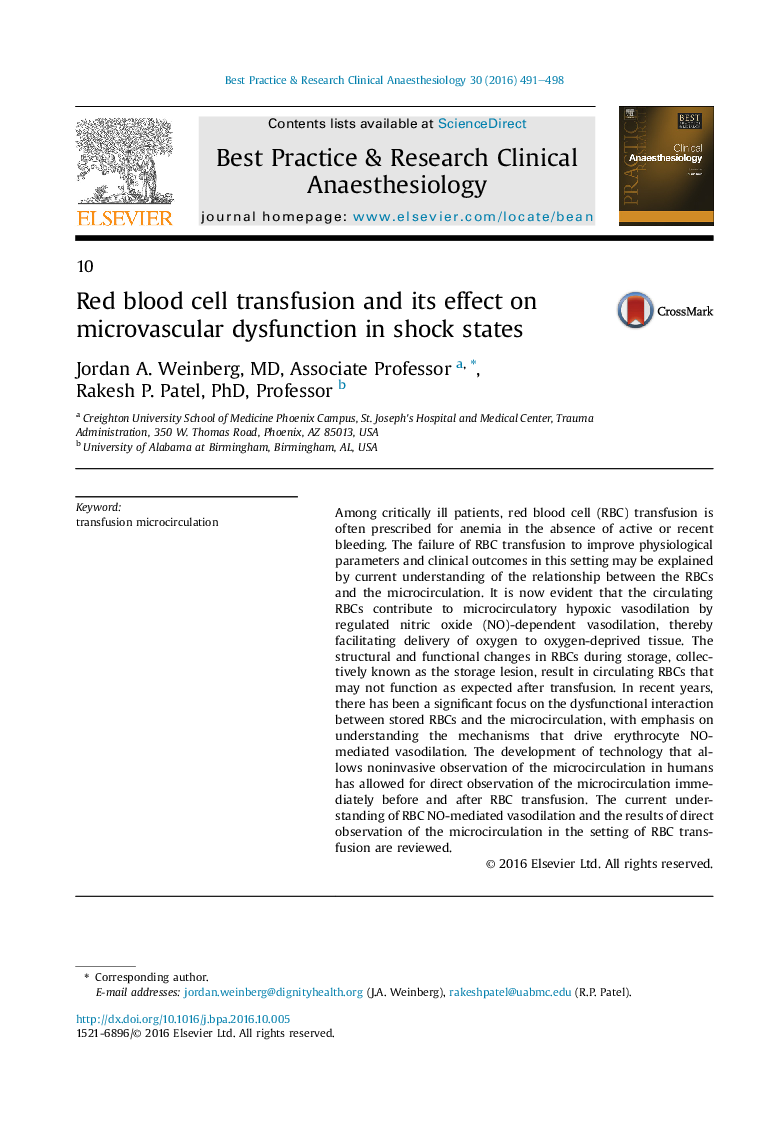| Article ID | Journal | Published Year | Pages | File Type |
|---|---|---|---|---|
| 8610956 | Best Practice & Research Clinical Anaesthesiology | 2016 | 8 Pages |
Abstract
Among critically ill patients, red blood cell (RBC) transfusion is often prescribed for anemia in the absence of active or recent bleeding. The failure of RBC transfusion to improve physiological parameters and clinical outcomes in this setting may be explained by current understanding of the relationship between the RBCs and the microcirculation. It is now evident that the circulating RBCs contribute to microcirculatory hypoxic vasodilation by regulated nitric oxide (NO)-dependent vasodilation, thereby facilitating delivery of oxygen to oxygen-deprived tissue. The structural and functional changes in RBCs during storage, collectively known as the storage lesion, result in circulating RBCs that may not function as expected after transfusion. In recent years, there has been a significant focus on the dysfunctional interaction between stored RBCs and the microcirculation, with emphasis on understanding the mechanisms that drive erythrocyte NO-mediated vasodilation. The development of technology that allows noninvasive observation of the microcirculation in humans has allowed for direct observation of the microcirculation immediately before and after RBC transfusion. The current understanding of RBC NO-mediated vasodilation and the results of direct observation of the microcirculation in the setting of RBC transfusion are reviewed.
Related Topics
Health Sciences
Medicine and Dentistry
Anesthesiology and Pain Medicine
Authors
Jordan A. (Associate Professor), Rakesh P. (Professor),
